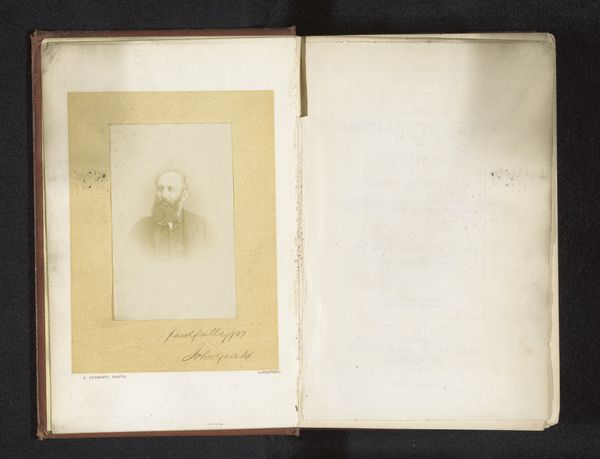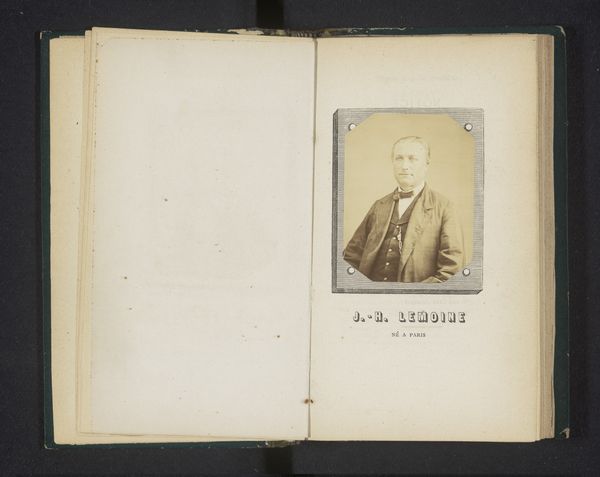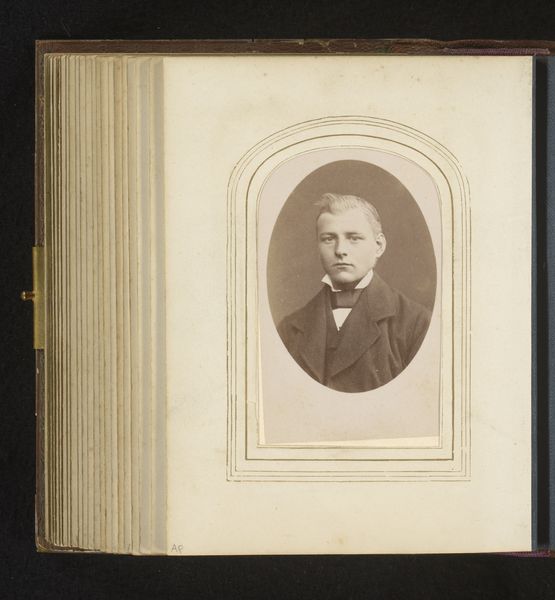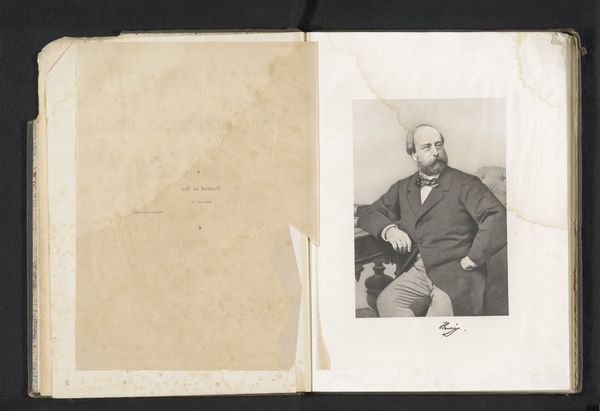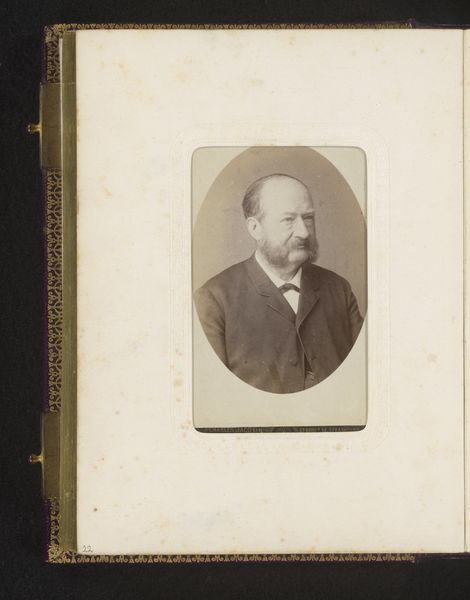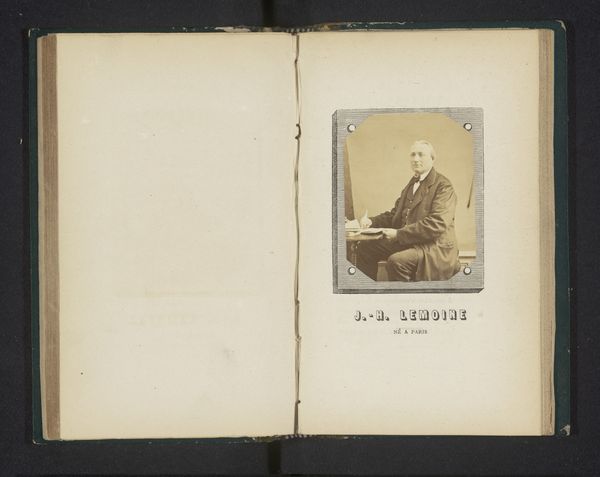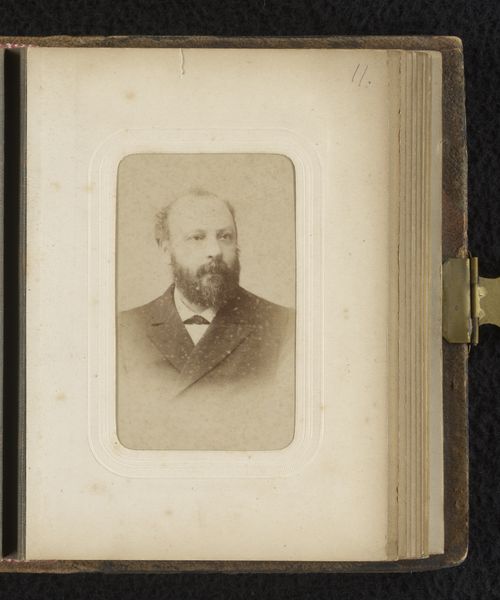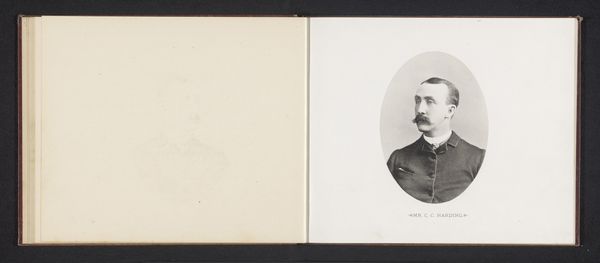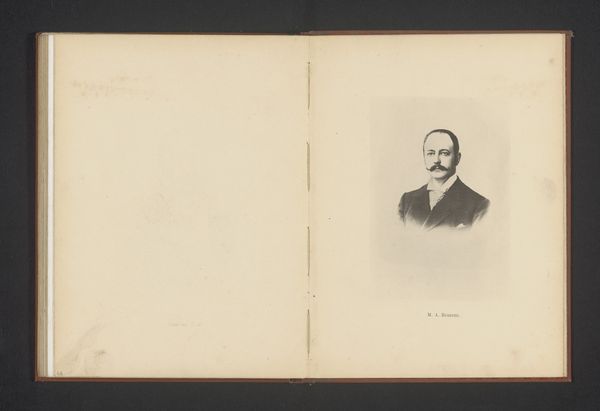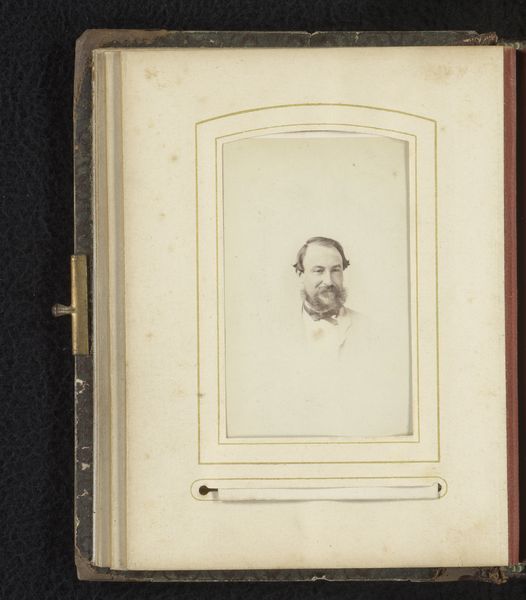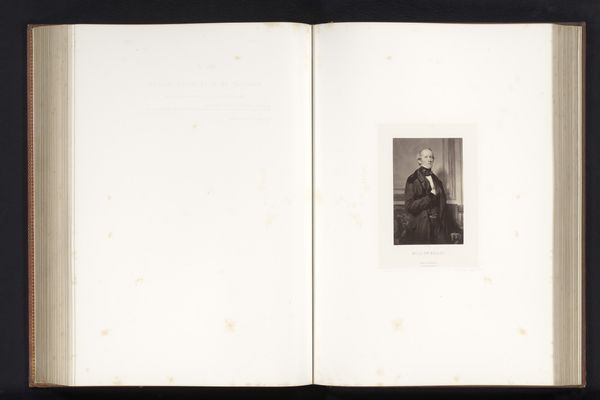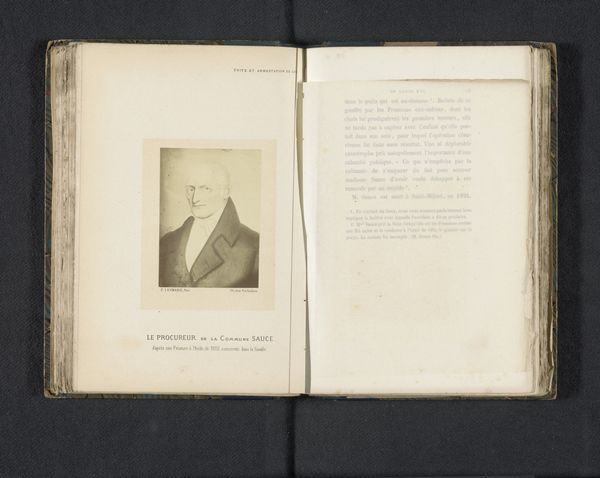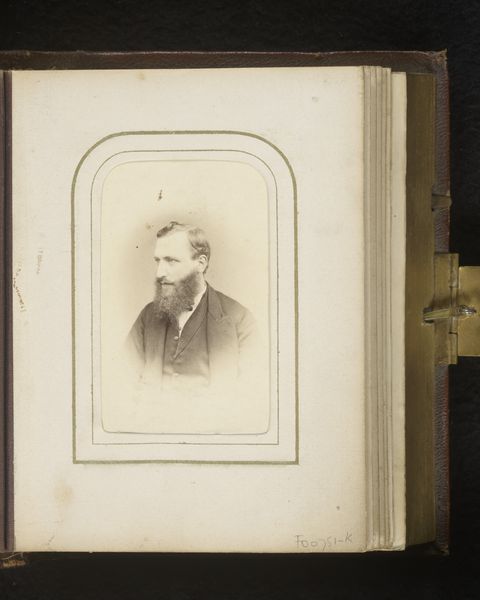
photography, gelatin-silver-print
#
portrait
#
photography
#
gelatin-silver-print
#
realism
Dimensions: height 138 mm, width 93 mm
Copyright: Rijks Museum: Open Domain
Curator: This gelatin silver print, a photographic portrait made in 1895, captures Henri Ernest Moltzer, a professor at Utrecht. It exudes a somber mood. Editor: The composition is striking; Moltzer is presented as a bust portrait, sharply contrasting against a softly blurred background, and mounted on the album page. Curator: The choice of the gelatin silver print technique here, typical of its time, reveals a desire for realistic detail, yet realism served the interests of specific social classes. The academic elite, like Moltzer, wanted their images to be widely circulated and this would show their cultural authority. Editor: Yes, I'm struck by how the sharp focus on the subject emphasizes his features—the meticulous detailing of his hair and mustache against the hazy suit is an interesting duality. The portrait is a study of texture and gradations of light, creating a sense of depth within a limited tonal range. Curator: Indeed. Considering the institutional setting, such portraits played a significant role in constructing the public image of academia. Notice how his posture, slightly angled towards the viewer, hints at intellectual engagement. He's not merely posing; he is presenting himself as a figure of authority. Editor: The controlled lighting further enhances this impression. It’s like a stage spotlight subtly illuminating the contours of his face, highlighting the intellectual capacity you just spoke of and giving us a direct engagement. There’s something so engaging in the subject's controlled gaze. Curator: Absolutely, and consider that such portraits in albums or displayed publicly, reinforced the status hierarchies and intellectual lineage within academic circles. This wasn't just art, but a social tool. Editor: From a formalist standpoint, one appreciates the nuanced play of light and shadow in this realistic technique. The subject and style converge to suggest the power of intellect, in that particular moment. Curator: It shows us a time of developing educational ideals and aspirations for intellectual class within the social context. Editor: An evocative portrait that still provokes thought about perception and self-representation today.
Comments
No comments
Be the first to comment and join the conversation on the ultimate creative platform.
